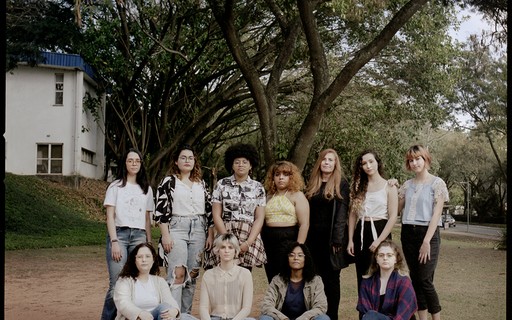
In the top row are Vitoria Fonseca, Evans Morgado, Ana Clara de Paula, Victoria Malta, Lilian Suga, Loriani de Araujo, and Marian Michelaci. Bottom row: Julia Mello, Florence de Almeida, Taissa Oliveira, Vivian Prado, Catarina Idar (Photo: Camila Svensson)
The most wonderful thing about being a scientist is undoubtedly curiosity. But in addition to being curious, the important thing is how each individual can develop that interest in a unique way. Each of us has been stimulated in different ways, whether through a book, a TV show, teachers, science fairs, planetariums, astronomy clubs, observations with amateur telescopes, family encouragement, or watching different experiences at school and in museums. Science, movies, among others. other.
People often do not have access to knowledge in astronomy, oceanography, geophysics, geology and meteorology. They appear superficially in the content of basic education. Therefore, we reiterate the importance of introducing these topics to girls who are still in school. Not necessarily that they want to pursue scientific careers, but to know that this is a possible career for women too, and to appreciate the importance of science in our society.
The astronomers It emerged in 2019 as an idea for a project aimed at girls, at undergraduate and graduate student meetings under the guidance of Professor Alessandra Figueiredo Cipriano, of the Institute of Astronomy, Geophysics and Atmospheric Sciences of the University of São Paulo (IAG-USP). We set out to design a face-to-face training course where about a hundred girls would visit USP and develop activities that mimic the researcher’s life. In 2020, when the course was ready, the pandemic came and we had to adjust the schedule to adapt it to the new confinement reality. The far road seemed like a viable way out. But how can we bring girls closer to scientists so that they enter the academic environment of the public university that produces science?
The idea of monitoring the activities of girls on a daily basis has always been one of the goals. The challenge was to find an accessible platform to create this proximity. Thus, the character of the “Fairy Godmother” emerged, a graduate and postgraduate woman or scientist who had already graduated, guiding the girls during the project, stimulating the independence and independence of astronomers, and encouraging a spirit of inquiry and collaborative work in each group.
Activities have been taking place during school holidays since 2020, receiving 600 girls annually to submit online materials presenting the natural sciences, pathways and research of Brazilian scientists, experiments with accessible material and conversational sessions on female representation in science with undergraduate and postgraduate students. Graduates. There are many women scientists in Brazil. The Astrominas are coordinated by about 30 of them, and in each version, we have a different number of fictional godfathers. The application process for Astrominas vacancies is very simple: you just need to register on the website, select as female, be between 14 and 17 years old and be enrolled in a school. We ran a lottery, taking into account the quotas for black, brown and indigenous girls, girls from public schools, to make a project more in line with Brazilian realities.
We are aware that barriers for girls interested in science manifest themselves in all aspects of society as structural barriers. Thus, they are in family relationships, in school, in the way women are represented through the media, in the kind of games suggested with gender bias and in any other situation where the current masculinity in our society limits women. Science needs diversity, not only in gender, but also race, class, or any other type, so that other worldviews can synthesize knowledge. Astrominas exist to contribute in some way to changing this scenario, but we need other projects to encourage science and culture, and especially for this knowledge to reach all parts of the country.
In addition to introducing scientific topics, we insist on a welcoming perspective, so that these girls and women persist, even when everything indicates to them that they do not belong in this environment. We want astrological stars to have the confidence to go their own way, because with patience and flexibility, a woman can get where she wants to be. It is also essential that you have good relationships along the way, whether from friends, teachers, relatives, or anyone else, so that they can be strengthened with each new challenge. My biggest wish is that we can demystify the exact and natural sciences of women, and make sure they understand that their space should always be where you want it to be.



![[VÍDEO] Elton John’s final show in the UK has the crowd moving](https://www.lodivalleynews.com/wp-content/uploads/2023/06/Elton-John-1-690x600.jpg)


More Stories
The Director of Ibict receives the Coordinator of CESU-PI – Brazilian Institute for Information in Science and Technology
A doctor who spreads fake news about breast cancer is registered with the CRM of Minas
The program offers scholarships to women in the field of science and technology